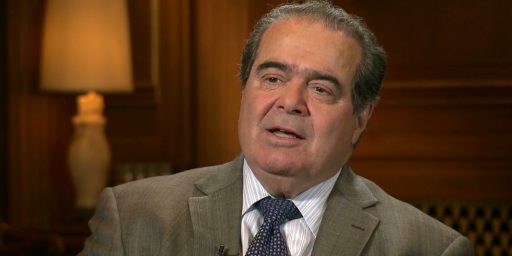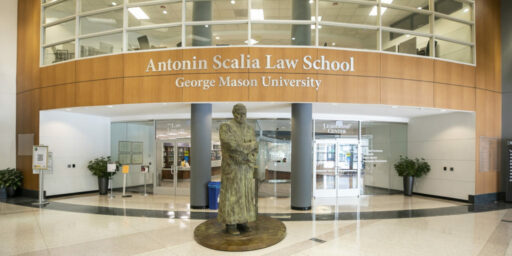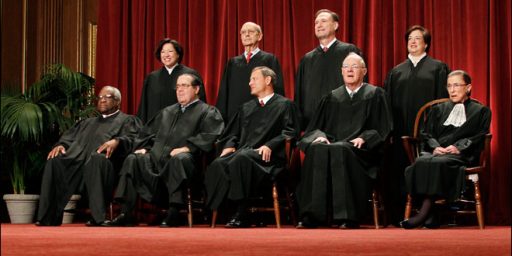Roberts: Conservative But Not a Scalia
Charles Lane has, based on two days of evasive answers, created a composite of the type of Chief Justice John Roberts will be, pronouncing him, “A Conservative, Yes, but Not a Scalia.”
Still blurry at the edges, thanks to Roberts’s refusal to declare how he would rule on abortion rights and other specific issues, it is nevertheless a picture of a conservative different in important respects from the two members of the Supreme Court whom Bush has said he most admires, Justices Antonin Scalia and Clarence Thomas. Scalia has said that courts should avoid basing their interpretations of laws on the history behind them; Roberts said there is a role for legislative history. Thomas has embraced an approach to constitutional interpretation that relies heavily on his view of the original intent of the framers; Roberts said that is not always possible.
[…]
There is, however, a limit to the daylight between Scalia and Thomas, on the one hand, and Roberts on the other. Roberts stopped well short of endorsing Roe — or calling for its overruling — in the hearings.
Social conservatives who support his nomination said they were generally comfortable with his testimony, which some said privately was what he had to say to help get confirmed. At the same time, it is also possible that Roberts will change his views once he is on the court. As Schumer pointed out yesterday, Thomas gave a similar answer to Roberts on the right to privacy at his 1991 confirmation hearing, but struck a different note it in Lawrence .
Still, there was other evidence that Roberts, while he might or might not reach the same results as Scalia and Thomas, would approach cases in a different way. Sen. Charles E. Grassley (R-Iowa) asked Roberts: “To what extent do you share Justice Scalia’s view on unreliability of legislative history?” Roberts replied that, though the interpretation of a law or the Constitution has to begin with the text, “I have quoted and looked to legislative history in the past to help determine the meaning of ambiguous terms, and I would expect to follow that same approach on the Supreme Court.”
Whereas Scalia and Thomas often look to strict rules of statutory or constitutional interpretation to keep judges from taking over the legislative or executive function, Roberts repeatedly emphasized the restraining influence of what he called “the judicial process.” Harking back to concepts he learned at Harvard Law School, Roberts depicted judges deliberating within a kind of insulated environment in which the only materials they take into account are existing law, legal briefs, the case record and the views of other judges. “It’s basically an emphasis on legal craftsmanship,” Barnett said. “You take a smidgen of history, a dollop of text, a spoonful of precedent and ladle it all over a very sensitive treatment of the facts and that yields a very high-quality product.”
Very interesting but, of course, incredibly speculative. Justices have a way of surprising us once they got on the Court.





